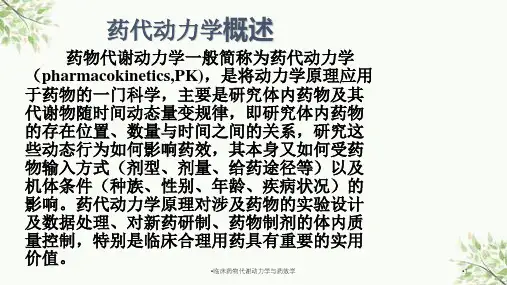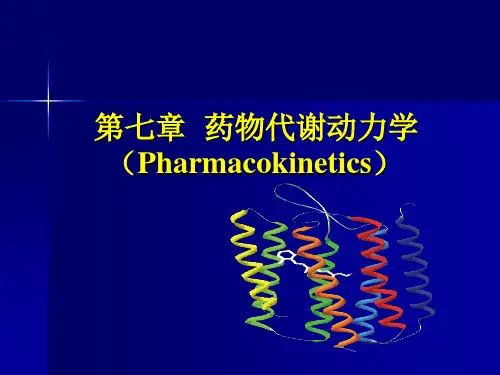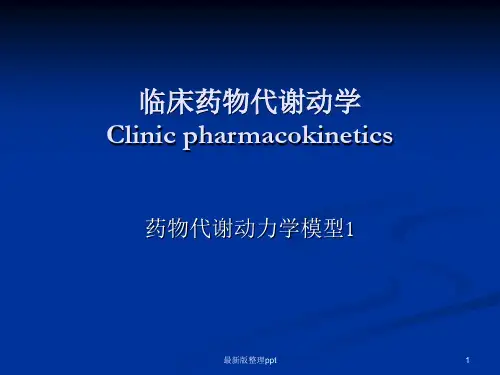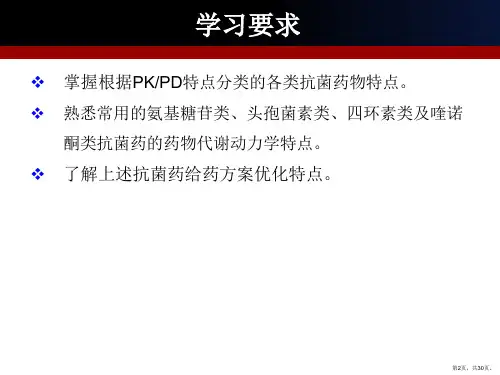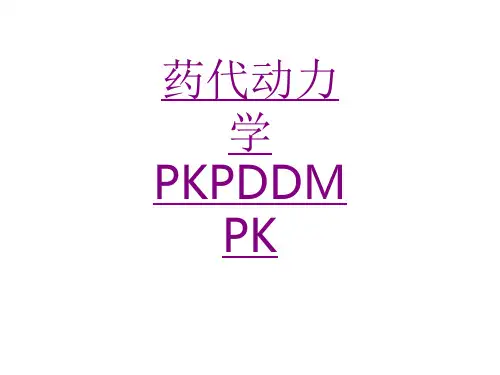Administration
immediately distributed evenly around the compartment …..
Stirrer
Excretion
Metabolism
and subjected to loss by metabolic deactivation and excretion.
dC/dt = -Kel
积分得: C = Co - Kel ·t,AUC为直线 方程。
C = 1/2Co时t1,/2 t= = t1/2: 0.5·Co/Kel
**零级消除的t1/2与剂量成正比,是剂量依 赖型半衰期。
*****
零级动力学过程:恒量消除 血药浓度~时间关系(AUC, C~t) :直线 对数血药浓度~时间关系(logC~t): 曲线 半衰期(t1/2 = 0.5·Co/Kel):不恒定,剂量
dC/dt =
dC/dt =
Vm·C
简化为:Vm·C Km + C
= Vm C
这时药物消除速率与药浓无关,为零级动力 学过程, 按最大速率消除。
不管初始剂量如何,体内血药浓度充 分降低后,消除总是符合一级动力学过程。
大多数药物以一级动力学消 除
一级动力学消除特点: 零级动力学消除特点:
1.恒比消除。
依赖 Alcohol,heparin,phenytoin,aspirin:
高浓度时遵循零级动力学消除。
图
消除 5单位/h 2.5单位/h
1.25单位/h
消除2.5单位/h 2.5单位/h 2.5单位/h
一级动力学: 恒比消除
back 图
零级动力学: 恒量消除
3、米氏动力学过程:
